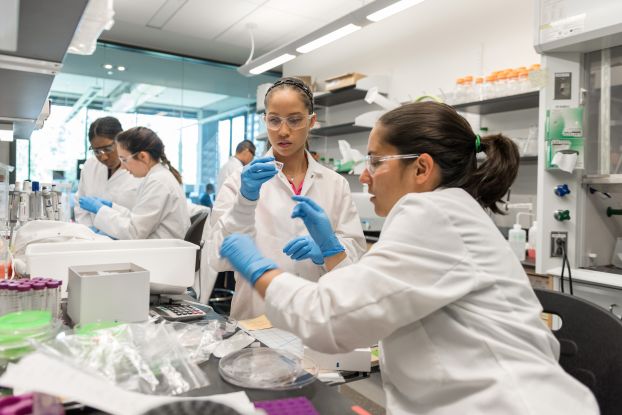The broader impacts discussion is a critical component of any proposal submitted to the U.S. National Science Foundation. It answers the following question: How does your research benefit society?
 On this page
On this page
What are broader impacts?
NSF funds scientists and engineers to perform research that advances discovery and innovation. The agency also expects researchers' work to have broader impacts: the potential to benefit society and contribute to the achievement of specific, desired societal outcomes.
NSF does not want to be prescriptive about the societal outcomes a project addresses. Examples of desired outcomes include, but aren't limited to:
STEM workforce
Developing a globally competitive STEM workforce.
Partnerships
Building partnerships between academia, industry and others.
National security
Improving national security.
Economic competitiveness
Increasing the economic competitiveness of the U.S.
Infrastructure
Enhancing infrastructure for research and education.
By evaluating every proposal it receives according to its intellectual merit and its broader impacts, NSF ensures that publicly funded research has tangible benefits to society that go beyond increasing knowledge.
Explore examples of NSF-funded projects' broader impacts below:
From training the next generation of cutting-edge materials researchers to encouraging entrepreneurial thinking among community college students, NSF-funded researchers help teach future scientists and engineers: work that helps build America's STEM workforce. Projects find creative ways to broaden participation in science, ensuring everyone has an opportunity to succeed in all fields of science and engineering.
Broader impacts are often intrinsic to fundamental research. Studying how organisms sense and respond to heat is critical for understanding how to treat pain; using computer modeling to analyze biochemical reactions sheds light on the mechanics that govern our world. Fundamental research both expands the limits of human knowledge — shining light on how we make decisions, for example — and uncovers insights that could save lives.
Scientific discovery can be a tool for societal progress. Think of adaptive technologies — bionic eyes or wearable robotics — that improve the lives of people with disabilities, or how harnessing powerful supercomputers can help fight HIV. When research tackles societal challenges, such as trauma research done by and for U.S. veterans, lives can be shaped for the better.
The impacts of NSF research extend beyond the borders of an institution or country. Analyzing responses to COVID-19 helps halt its spread, while recycling agricultural waste benefits the environment across the globe. International partnerships fuel pioneering science — capturing images of black holes, for example — while preparing the next generation of globally engaged scientists and engineers.
Science education and exploration aren't limited to the classroom or the lab. They happen in the snow-covered forests of the western U.S. and in the rainforests of Puerto Rico, in museum maker spaces and galaxy zoos. Engaging citizens in research helps increase public understanding of science and the scientific process itself.

Credit: Rob Felt/Georgia Tech
Your proposal to NSF must clearly state how your activities will contribute to one or more desired societal outcomes.
Grant reviewers will evaluate your broader impacts statement on these five criteria:
- What is the potential for the proposed activity to benefit society or advance desired societal outcomes?
- To what extent do the proposed activities suggest and explore creative, original or potentially transformative concepts?
- Is the plan for carrying out the proposed activities well-reasoned, well-organized and based on sound rationale? Does the plan incorporate a mechanism to assess success?
- How well qualified is the individual, team or institution to conduct the proposed activities?
- Are there adequate resources available to the principal investigator (either at the home institution or through collaborations) to carry out the proposed activities?
Your project's broader impact activities don't need to be a separate add-on to your research. Your project can have broader impacts through:
- Your research activities.
- Activities directly related to your research.
- Activities that are supported by, but complementary to, your research activities.
Additional resources

NSF 101: Five tips for your Broader Impacts statement
This blog post shares tips from NSF program officers to help prepare a Broader Impacts statement.


